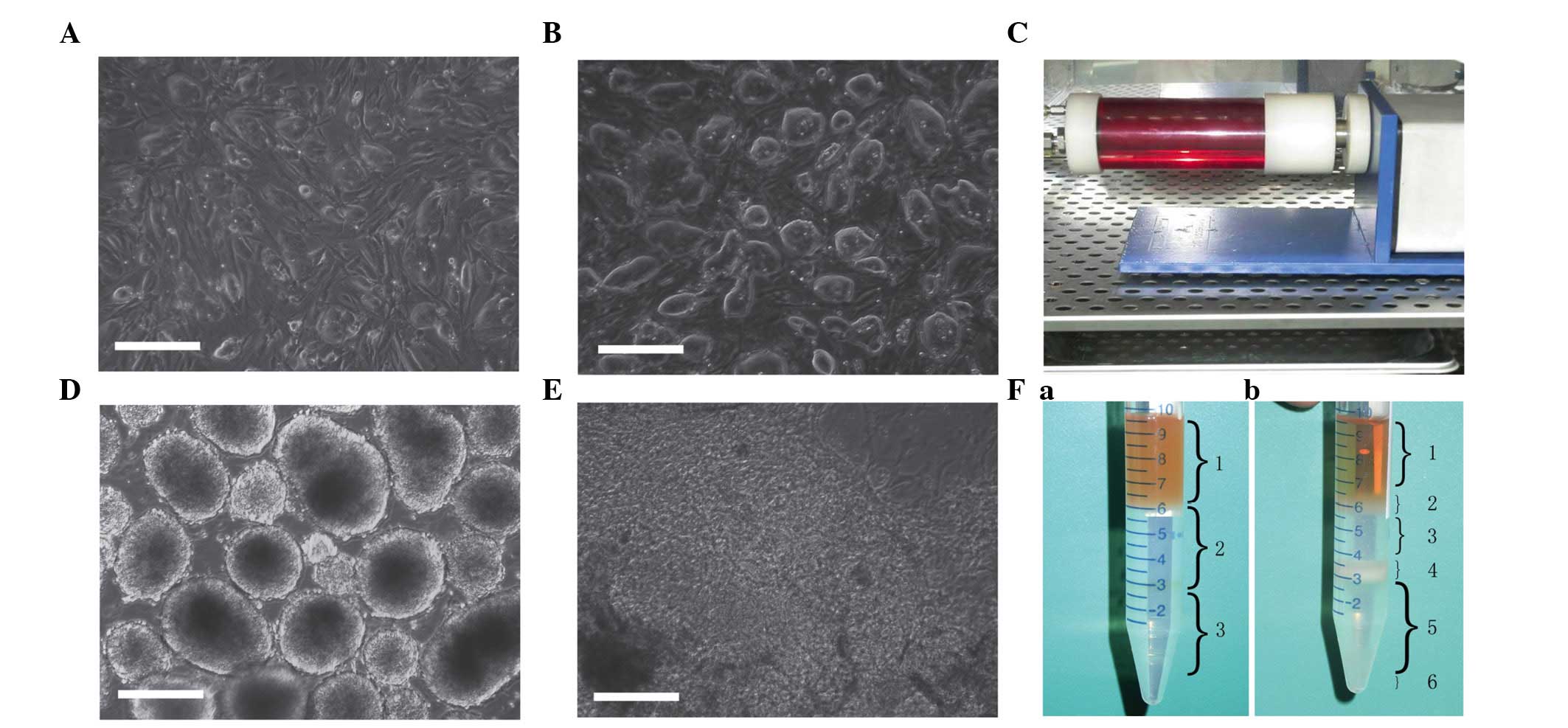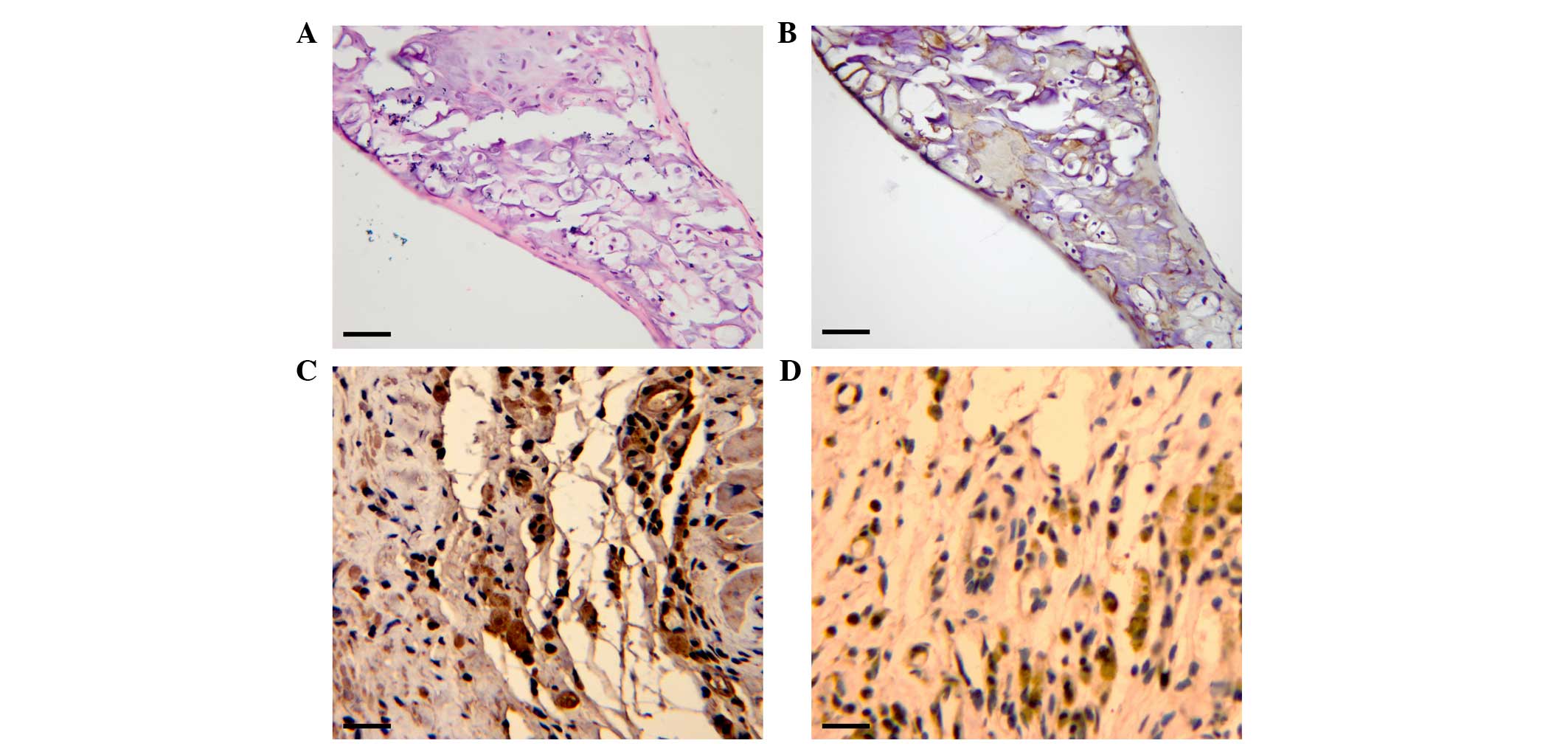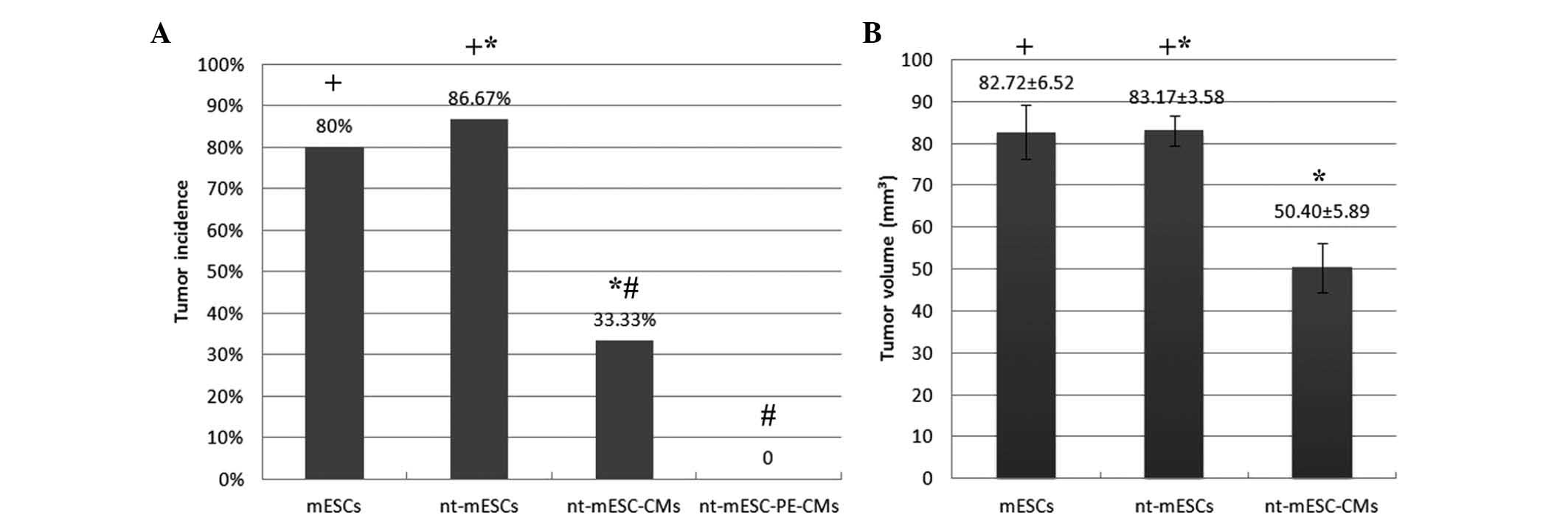|
1
|
Soonpaa MH and Field LJ: Survey of studies
examining mammalian cardiomyocyte DNA synthesis. Circ Res.
83:15–26. 1998. View Article : Google Scholar : PubMed/NCBI
|
|
2
|
Sun Y and Weber KT: Infarct scar: A
dynamic tissue. Cardiovasc Res. 46:250–256. 2000. View Article : Google Scholar : PubMed/NCBI
|
|
3
|
Taylor DO, Edwards LB, Aurora P, Christie
JD, Dobbels F, Kirk R, Rahmel AO, Kucheryavaya AY and Hertz MI:
Registry of the international society for heart and lung
transplantation: Twenty-fifth official adult heart transplant
report-2008. J Heart Lung Transplant. 27:943–956. 2008. View Article : Google Scholar : PubMed/NCBI
|
|
4
|
Augoustides JG and Riha H: Recent progress
in heart failure treatment and heart transplantation. J
Cardiothorac Vasc Anesth. 23:738–748. 2009. View Article : Google Scholar : PubMed/NCBI
|
|
5
|
Laflamme MA and Murry CE: Regenerating the
heart. Nat Biotechnol. 23:845–856. 2005. View Article : Google Scholar : PubMed/NCBI
|
|
6
|
Laflamme MA, Zbinden S, Epstein SE and
Murry CE: Cell-based therapy for myocardial ischemia and
infarction: Pathophysiological mechanisms. Annu Rev Pathol.
2:307–339. 2007. View Article : Google Scholar : PubMed/NCBI
|
|
7
|
Soonpaa MH, Koh GY, Klug MG and Field LJ:
Formation of nascent intercalated disks between grafted fetal
cardiomyocytes and host myocardium. Science. 264:98–101. 1994.
View Article : Google Scholar : PubMed/NCBI
|
|
8
|
Reinecke H, Zhang M, Bartosek T and Murry
CE: Survival, integration, and differentiation of cardiomyocyte
grafts: A study in normal and injured rat hearts. Circulation.
100:193–202. 1999. View Article : Google Scholar : PubMed/NCBI
|
|
9
|
Koh GY, Soonpaa MH, Klug MG, Pride HP,
Cooper BJ, Zipes DP and Field LJ: Stable fetal cardiomyocyte grafts
in the hearts of dystrophic mice and dogs. J Clin Invest.
96:2034–2042. 1995. View Article : Google Scholar : PubMed/NCBI
|
|
10
|
Evans MJ and Kaufman MH: Establishment in
culture of pluripotential cells from mouse embryos. Nature.
292:154–156. 1981. View
Article : Google Scholar : PubMed/NCBI
|
|
11
|
Amit M, Carpenter MK, Inokuma MS, Chiu CP,
Harris CP, Waknitz MA, Itskovitz-Eldor J and Thomson JA: Clonally
derived human embryonic stem cell lines maintain pluripotency and
proliferative potential for prolonged periods of culture. Dev Biol.
227:271–278. 2000. View Article : Google Scholar : PubMed/NCBI
|
|
12
|
Xu C, Police S, Rao N and Carpenter MK:
Characterization and enrichment of cardiomyocytes derived from
human embryonic stem cells. Circ Res. 91:501–508. 2002. View Article : Google Scholar : PubMed/NCBI
|
|
13
|
Mummery C, Ward-van Oostwaard D,
Doevendans P, Spijker R, van den Brink S, Hassink R, van der Heyden
M, Opthof T, Pera M, de la Riviere AB, et al: Differentiation of
human embryonic stem cells to cardiomyocytes: Role of coculture
with visceral endoderm-like cells. Circulation. 107:2733–2740.
2003. View Article : Google Scholar : PubMed/NCBI
|
|
14
|
Xie CQ, Zhang J, Xiao Y, Zhang L, Mou Y,
Liu X, Akinbami M, Cui T and Chen YE: Transplantation of human
undifferentiated embryonic stem cells into a myocardial infarction
rat model. Stem Cells Dev. 16:25–29. 2007. View Article : Google Scholar : PubMed/NCBI
|
|
15
|
Caspi O, Huber I, Kehat I, Habib M, Arbel
G, Gepstein A, Yankelson L, Aronson D, Beyar R and Gepstein L:
Transplantation of human embryonic stem cell-derived cardiomyocytes
improves myocardial performance in infarcted rat hearts. J Am Coll
Cardiol. 50:1884–1893. 2007. View Article : Google Scholar : PubMed/NCBI
|
|
16
|
Robbins J, Gulick J, Sanchez A, Howles P
and Doetschman T: Mouse embryonic stem cells express the cardiac
myosin heavy chain genes during development in vitro. J Biol Chem.
265:11905–11909. 1990.PubMed/NCBI
|
|
17
|
Maltsev VA, Wobus AM, Rohwedel J, Bader M
and Hescheler J: Cardiomyocytes differentiated in vitro from
embryonic stem cells developmentally express cardiacspecific genes
and ionic currents. Circ Res. 75:233–244. 1994. View Article : Google Scholar : PubMed/NCBI
|
|
18
|
Yang Y, Min JY, Rana JS, Ke Q, Cai J, Chen
Y, Morgan JP and Xiao YF: VEGF enhances functional improvement of
postin-farcted hearts by transplantation of ESC-differentiated
cells. J Appl Physiol. 93:1140–1151. 2002. View Article : Google Scholar
|
|
19
|
Laflamme MA, Chen KY, Naumova AV, Muskheli
V, Fugate JA, Dupras SK, Reinecke H, Xu C, Hassanipour M, Police S,
et al: Cardiomyocytes derived from human embryonic stem cells in
pro-survival factors enhance function of infarcted rat hearts. Nat
Biotechnol. 25:1015–1024. 2007. View
Article : Google Scholar : PubMed/NCBI
|
|
20
|
van Laake LW, Passier R, Monshouwer-Kloots
J, Verkleij AJ, Lips DJ, Freund C, den Ouden K, Ward-van Oostwaard
D, Korving J, Tertoolen LG, et al: Human embryonic stem
cell-derived cardiomyocytes survive and mature in the mouse heart
and transiently improve function after myocardial infarction. Stem
Cell Res. 1:9–24. 2007. View Article : Google Scholar : PubMed/NCBI
|
|
21
|
Swijnenburg RJ, Tanaka M, Vogel H, Baker
J, Kofidis T, Gunawan F, Lebl DR, Caffarelli AD, de Bruin JL,
Fedoseyeva EV and Robbins RC: Embryonic stem cell immunogenicity
increases upon differentiation after transplantation into ischemic
myocardium. Circulation. 112(9 Suppl): I166–I172. 2005.PubMed/NCBI
|
|
22
|
He Q, Trindade PT, Stumm M, Li J,
Zammaretti P, Bettiol E, Dubois-Dauphin M, Herrmann F, Kalangos A,
Morel D, et al: Fate of undifferentiated mouse embryonic stem cells
within the rat heart: Role of myocardial infarction and immune
suppression. J Cell Mol Med. 13:188–201. 2009. View Article : Google Scholar
|
|
23
|
Nussbaum J, Minami E, Laflamme MA, Virag
JA, Ware CB, Masino A, Muskheli V, Pabon L, Reinecke H and Murry
CE: Transplantation of undifferentiated murine embryonic stem cells
in the heart:Teratoma formation and immune response. Fasbe J.
21:1345–1357. 2007. View Article : Google Scholar
|
|
24
|
Willadsen SM: Nuclear transplantation in
sheep embryos. Nature. 320:63–65. 1986. View Article : Google Scholar : PubMed/NCBI
|
|
25
|
Cibelli JB, Stice SL, Golueke PJ, et al:
Transgenic bovine chimeric offspring produced from somatic
cell-derived stem-like cells. Nat Biotechnol. 16:642–646. 1998.
View Article : Google Scholar : PubMed/NCBI
|
|
26
|
Koh CJ and Atala A: Tissue engineering,
stem cells, and cloning: Opportunities for regenerative medicine. J
Am Soc Nephrol. 15:1113–1125. 2004. View Article : Google Scholar : PubMed/NCBI
|
|
27
|
Leor J, Gerecht S, Cohen S, Miller L,
Holbova R, Ziskind A, Shachar M, Feinberg MS, Guetta E and
Itskovitz-Eldor J: Human embryonic stem cell transplantation to
repair the infarcted myocardium. Heart. 93:1278–1284. 2007.
View Article : Google Scholar : PubMed/NCBI
|
|
28
|
Cooke MJ, Stojkovic M and Przyborski SA:
Growth of teratomas derived from human pluripotent stem cells is
influenced by the graft site. Stem Cells Dev. 15:254–259. 2006.
View Article : Google Scholar : PubMed/NCBI
|
|
29
|
Prokhorova TA, Harkness LM, Frandsen U,
Ditzel N, Schrøder HD, Burns JS and Kassem M: Teratoma formation by
human embryonic stem cells is site dependent and enhanced by the
presence of Matrigel. Stem Cells Dev. 18:47–54. 2009. View Article : Google Scholar
|
|
30
|
Toumadje A, Kusumoto K, Parton A, Mericko
P, Dowell L, Ma G, Chen L, Barnes DW and Sato JD: Pluripotent
differentiation in vitro of murine ES-D3 embryonic stem cells. In
Vitro Cell Dev Biol Anim. 39:449–453. 2003. View Article : Google Scholar
|
|
31
|
Miyahara Y, Nagaya N, Kataoka M, Yanagawa
B, Tanaka K, Hao H, Ishino K, Ishida H, Shimizu T, Kangawa K, et
al: Monolayered mesenchymal stem cells repair scarred myocardium
after myocardial infarction. Nat Med. 12:459–465. 2006. View Article : Google Scholar : PubMed/NCBI
|
|
32
|
Lin Q, Fu Q, Zhang Y, Wang H, Liu Z, Zhou
J, Duan C, Wang Y, Wu K and Wang C: Tumourigenesis in the infarcted
rat heart is eliminated through differentiation and enrichment of
the transplanted embryonic stem cells. Eur J Heart Fail.
12:1179–1185. 2010. View Article : Google Scholar : PubMed/NCBI
|
|
33
|
Reubinoff BE, Pera MF, Fong CY, Trounson A
and Bongso A: Embryonic stem cell lines from human blastocysts:
Somatic differentiation in vitro. Nat Biotechnol. 18:399–404. 2000.
View Article : Google Scholar : PubMed/NCBI
|
|
34
|
Thomson JA, Itskovitz-Eldor J, Shapiro SS,
Waknitz MA, Swiergiel JJ, Marshall VS and Jones JM: Embryonic stem
cell lines derived from human blastocysts. Science. 282:1145–1147.
1998. View Article : Google Scholar : PubMed/NCBI
|
|
35
|
Laflamme MA, Gold J, Xu C, Hassanipour M,
Rosler E, Police S, Muskheli V and Murry CE: Formation of human
myocardium in the rat heart from human embryonic stem cells. Am J
Pathol. 167:663–671. 2005. View Article : Google Scholar : PubMed/NCBI
|














